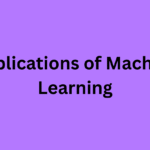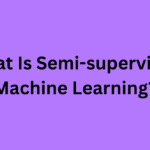Database Management System (DBMS)
Chapter 1: Introduction to DBMS
1.1 What is a Database?
1.2 Database vs File System
1.3 Characteristics of DBMS
1.4 Database Users and Architecture
1.5 Types of DBMS (Hierarchical, Network, Relational, NoSQL)
Chapter 2: Data Models and Schemas
2.1 Relational Model
2.2 Entity-Relationship (ER) Model
2.3 ER Diagrams – Entities, Attributes, Relationships
2.4 Mapping ER to Relational Model
2.5 Logical and Physical Data Independence
Chapter 3: SQL – Structured Query Language
3.1 Introduction to SQL
3.2 DDL: CREATE, ALTER, DROP
3.3 DML: SELECT, INSERT, UPDATE, DELETE
3.4 DCL and TCL: GRANT, REVOKE, COMMIT, ROLLBACK
3.5 Joins, Subqueries, and Nested Queries
Chapter 4: Database Design and Normalization
4.1 Functional Dependencies
4.2 Anomalies in Data
4.3 Normal Forms: 1NF, 2NF, 3NF, BCNF
4.4 Decomposition and Lossless Join
4.5 Practical Design Scenarios
Chapter 5: Indexing and Query Optimization
5.1 Indexing: Primary, Secondary, Clustered, Unclustered
5.2 Query Processing Steps
5.3 Cost Estimation and Optimization
5.4 Using EXPLAIN PLAN (MySQL/PostgreSQL)
5.5 Materialized Views and Query Caching
Chapter 6: Transactions and Concurrency Control
6.1 Concepts of Transaction and ACID Properties
6.2 Serializability and Scheduling
6.3 Concurrency Control Techniques (Locking, Timestamp)
6.4 Deadlock Handling
6.5 Recovery Techniques
Chapter 7: Web Development Fundamentals
7.1 Basics of Front-End (HTML, CSS, JS)
7.2 Introduction to Back-End Programming (PHP, Node.js, Python)
7.3 Client-Server Architecture
7.4 HTTP Requests and Responses
7.5 Using Web Servers (Apache, NGINX)
Chapter 8: Database Connectivity in Web Applications
8.1 Connecting to Databases using Server-side Languages
8.2 CRUD Operations with Web Forms
8.3 Form Handling and Input Validation
8.4 Preventing SQL Injection
8.5 MVC Architecture in Web Development
Chapter 9: Building Full-Stack Web Applications with DBMS
9.1 Front-End and Back-End Integration
9.2 User Authentication System (Login/Signup)
9.3 Building Dynamic Dashboards
9.4 Pagination and Search Functionality
9.5 Case Study: Mini E-commerce or Blog Application
Chapter 10: Advanced Topics and Project
10.1 NoSQL Databases (MongoDB, Firebase)
10.2 REST APIs and Database Integration
10.3 Hosting Web Apps with Online DB (Heroku, Render, Vercel)
10.4 Security Best Practices for DB-Driven Apps
10.5 Final Project: Web App with Database Backend






